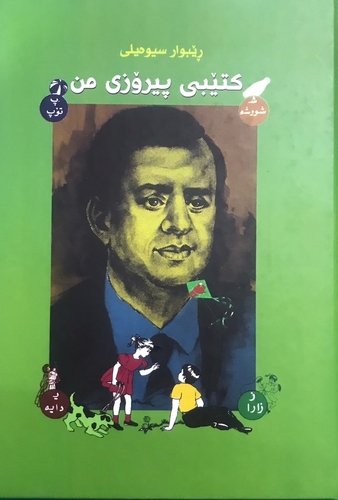"My Holy Book" is the name of a work by Kurdish thinker Rebwar Siwayli. At first, from the title of the book, the reader thinks of many hypothetical things. Has the author written a detailed broadcast in the style of the holy books and explained the measures and “musts and must nots” of life to the audience? Or is it a book that takes a critical approach to religious thoughts? Or did he evaluate the sacred things around him and the world in his mind and put them on paper?
But when you start reading the author's introduction and then look at the book chapter by chapter and lesson by lesson, you are facings a very different atmosphere.
Rebwar Siwayli has always been a writer who has surprised his audience with new and unexpected works. He has already shown this trend in many of his writings, from "The World of Small Things" to "Nali's Book", "Haji Qadir", "Fear of Philosophy", "The Book of Praises", and many other works.

But why is Siwayli's "My Holy Book" the most special to me? Because his subject is such that gets all the opportunities from the reader to have any predictions. In short, Siwayli has given a philosophical and educational reading of the first book of his life and that of many Kurdish scholars in the South part of Kurdistan. It is Baldar's book, "New Alphabet".
The book was actually a book for first grade students in South Kurdistan and several generations have used it as a resource, and it has been taught in all schools.
According to Rebwar Siwayli, who has reprinted all of Baldar's book, the reader knows what the book contained.
The book consisted of sixty-nine lessons, ranging from the very simple lesson "Dar" (Tree) which is only one word repeated three times, to the sixty-ninth lesson, "The Year Is Over," which is a lesson that says the school is finished and teachers and students say goodbye to the school year and the farewell of students and teachers and consists of seven sentences.

But let's see why Rebwar Siwayli did this and how he brought an old education book and explained it lesson by lesson. Unfortunately, this unique book, which has beautiful and artistic language and design, has been removed from the ranks of school books in the region and replaced by other inappropriate books. First, in my opinion, he wanted to criticize the educational system that dries up rich resources and trains Kurdish children's language and understanding with incomplete and unnatural language and linguistic sources. At the same time, we can say that Siwayli was nostalgic for the time when he read the book and now, he has returned to his educational past and that of his nostalgia, according to his experience in both philosophy and education.
On the other hand, as a philosophical thinker, Siwayli looked at Amin Baldar's book "New Alphabet" and reread the unit from that perspective. Several points are worth noting. Although Rebwar Siwayli began to read the book philosophically from the first lesson according to his own intellectual plan, he tried to adapt his philosophical thoughts to the topics contained in the book. Even if Amin Baldar did not write each of his lessons with this philosophy, the emphasis that Siwayli has given on the lessons and the meaning of his lessons leads us to believe that the book must have been written and thought of in the way he describes. For example, the first lesson is a Dar (tree). The word is repeated three times. The author has given a different analysis of only the three words and the picture of an apple tree that depicts the lesson. What a tree in the natural world is, what its cultural meaning is, why the word is repeated three times, etc. in addition to the author's reading of the word and scene, this is also a way for the teacher to see another world beyond words and pictures. In other words, if an aspect of Sewayli's work is a criticism of the educational system and a student who must not miss the good book and be trained with these lessons, the other aspect of this book is the training of teachers to know the world beyond pictures in order to be able to do their best in educating and behaving with the children, particularly in the primary levels.

In the second lesson, where the word "Dara" is repeated only three times and there is a picture of a boy and a kite, Siwayli again gives a long description. First, the "Dara" in the picture and the real Dara of the world are different! (Dara in Kurdish means rich) Second, why the two pictures are different. The real Dara of the real Kurdish world is a poor Kurdish child, and the picture in the book is the image of a new style of Kurdish rich people who are dressed well. Then the author tells why Dara. Why boy? Why should a boy be the first human figure in the book? He goes on to analyze this issue by introducing masculine representation. In the next lessons, a picture of a girl comes without a name and with its color until it reaches a lesson that, according to Siwayli, preserves gender equality and boys and girls are equal.
In short, the book gave a pleasant and nostalgic feeling to the generations who learned to read and write through the book, and for many people who are interested in the philosophy of education and activities in this field, contains many new and interesting stories.










